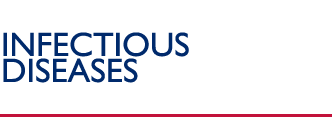Egypt
Although Egypt is not on the World Health Organization (WHO)
list of 22 countries with a high tuberculosis burden, it is considered
one of the high-burden countries in WHO’s Eastern
Mediterranean region. While Egypt has achieved treatment success
rates higher than the WHO-recommended target of 85 percent,
the case detection rate of about 50 percent remains below
the 70 percent target.
Until 1979, the Egyptian government organized TB control
through its network of chest care facilities. In that year, the government
established the National TB
Program (NTP) in an attempt to provide
more efficient and effective TB control services.
Primary health care units, health insurance
organizations, university hospitals, and
prison facilities have been involved in the
effort to expand DOTS, which now reaches
100 percent of the population. The NTP has
become a model of TB control for middle income
countries in the region and now provides
training courses targeted to international
audiences.
USAID Approach and Key Activities
A USAID assessment mission in May 2002 led to an agreement with the Tuberculosis Coalition for Technical
Assistance (TBCTA, a partnership of six nongovernmental and international organizations involved in global
TB control) for supporting TB activities in Egypt for fiscal years 2003 to 2005. Between 2001 and 2004,
USAID funds for TB programming in Egypt averaged almost $1 million per year.
The main components of the USAID program are:
- Strengthening the management and planning capacity of the NTP
- Improving the laboratory network, including providing technical assistance for establishing new
diagnostic centers
- Improving the surveillance system
- Improving TB case management
- Conducting two operational research studies per year
- Supporting social mobilization efforts of nongovernmental organizations (NGOs)
All components of the program have moved forward, except for the introduction of an electronic TB surveillance
system. The proposed system has been postponed because the NTP has been collaborating with WHO
on developing and piloting an electronic system in Cairo and Giza governorates.
USAID Program Achievements
Main achievements of the USAID program include
the following:
- Finalized a midterm TB development plan
- Developed selection criteria for new diagnostic
centers (20 to be opened in March 2005)
- Prepared launching of DOTS
- Assessed training needs in TB control
and prevention
- Supported NTP national staff in international and
in-country training courses
- Launched a community outreach health awareness
campaign targeting the residents of poor
slums in Giza governorate
Case Detection and Treatment Success Rates Under DOTS
Partnerships
USAID’s partners include TBCTA, WHO, and the
Naval American Medical Research Unit 3. The Global
Fund to Fight AIDS, Tuberculosis and Malaria has
awarded Egypt $4 million for TB control, and the
Global TB Drug Facility is prepared to assist the NTP with drugs. The Japan International Cooperation Agency (JICA) has agreed to
support a public-private TB project. Other international collaborators investing in efforts to lessen Egypt’s TB burden include the
Dutch embassy and the Royal Tropical Institute of the Netherlands.
December 2004
Related Links
|


